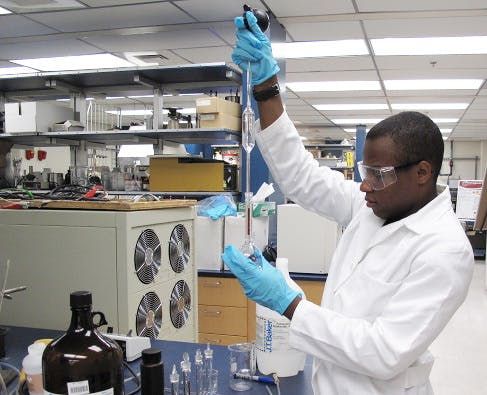The therapeutic properties of the cannabis plant have been known for
more than 5000
years.
However, it was not until
1896
that three researchers — Wood, Spivey and Easterfield — discovered
that cannabinoids, natural compounds unique to the plant, were behind
these effects. Working with the resin of Indian hemp in a laboratory in
Boston, Massachusetts, they isolated and named the first cannabinoid
compound, known as cannabinol (CBN). Their discovery was one of many
that led to a paradigm shift in research into human health and disease.
One Discovery Leads to Another
In 1940, more than four decades after the discovery of CBN, Roger Adams
isolated and identified another cannabinoid, cannabidiol (CBD), while
working with red oil extract made from Minnesota wild hemp at the
University of Illinois. After Adams’s discovery, it was 24 years until
the next breakthrough in cannabinoid science.
Working at Hebrew University in Jerusalem, Raphael Mechoulam identified
delta-9-tetrahydrocannabinol (THC), the substance responsible for much
of the psychoactive, or mood-altering, effects of cannabis. Since the
discovery of THC, there have been rapid advances in the isolation and
identification of cannabinoids. So far, over
85 unique
cannabinoids have been identified.
Further Breakthroughs in Cannabinoid Science
As researchers continued to learn more about cannabinoids, it appeared
increasingly likely that the effects of cannabinoids must be mediated by
a family of receptors. It was not until 1988 that the first of these
receptors, cannabinoid receptor type
1 (CB1) was revealed by
Allyn Howlett and William
Devane of St. Louis University Medical School, Missouri.
Since then, CB1 receptors have been found in large numbers in several
areas of the human brain, including the basal ganglia (affecting motor
activity), neocortex (thinking), hippocampus (short-term memory),
cerebellum (motor coordination), periaqueductal gray (pain perception),
and hypothalamus and limbic cortex (appetite and sedation).
These receptors are also found to a lesser extent in the dorsal horn of
the spinal cord (affecting pain perception) and on immune cells. A few
years after the discovery of CB1, a second
receptor, cannabinoid
receptor type 2 (CB2), was identified by researchers Munro, Thomas and
Abu-Shaar from the MRC
Laboratory of Molecular Biology in Cambridge, United Kingdom. CB2
receptors are predominantly found in immune cells and tissues, with the
greatest density in the spleen. Activation of these receptors reduces
inflammation, a precursor to many diseases.
Discovery of a New Molecular Signalling System
The discovery of cannabinoid receptors fueled speculation that the body
must produce compounds that bind to the receptors. The first such
compound, anandamide (AEA), was isolated by Raphael
Mechoulam and his team
at Hebrew University in Jerusalem in 1992.
A couple of years later, a second compound, 2-arachidonoylglycerol
(2-AG), was discovered and in the following decade several other
compounds capable of activating the cannabinoid receptors were
identified. These compounds, together with the receptors, make up the
endocannabinoid system.
Manipulation of the Endocannabinoid System
[Research](https://emedicine.medscape.com/article/1361971-overview# a4)
indicated that the endocannabinoid
system
mediates a number of physiological functions vital for survival. More
importantly, it suggested that modulating the activity of the
endocannabinoid system using cannabinoids may be the key to treating a
broad range of diseases and symptoms.
Currently, THC and CBD are the two main cannabinoids of medical
interest.
THC
has been found to increase appetite and reduce nausea, and may help
decrease pain, inflammation, and muscle control problems. CBD may be
useful in controlling epileptic seizures, reducing pain and
inflammation, and quelling mental illnesses and addictions.
Researchers Hone Synthetic Cannabinoids
Continued research into the therapeutic effects of cannabinoids led to
the creation of synthetic cannabinoids — chemicals created to mimic the
effects of natural cannabinoids. Two THC-based medications,
dronabinol
(Marinol) and
nabilone
(Cesamet), showed clinical benefit and were subsequently approved by the
U.S. Food and Drug Administration (FDA) for the prevention or treatment
of chemotherapy-induced nausea and vomiting. Other cannabis-based
medications are currently in development.
Combined Approach Offers Greater Hope
Research has yet to reveal the exact mechanisms by which all of the
cannabinoids in the cannabis family of plants exert their therapeutic
effects, but evidence suggests that these compounds work better together
than alone: a discovery termed the entourage effect. Support for this
effect derives from comparisons of the effect of the whole cannabis
plant with that of the drug Marinol. When Marinol became available as a
medicine in the mid-1980s, researchers believed that it would have the
same effect as the entire cannabis plant. However,
patients
prescribed Marinol frequently reported greater psychoactive effects —
caused, in part, by the lack of CBD, which is believed to modulate the
psychoactivity of the THC.
Advocates Call For Overhaul of Marijuana Laws
The ability of cannabinoids to work together to treat a variety of
ailments while causing minimal adverse side effects has led to calls for
medical marijuana –the use of the cannabis plant or its basic extracts
for medical purposes — to be legalized. Twenty-three
states
and Washington, DC, have already passed laws allowing marijuana to be
used for a variety of medical conditions. However, many people are still
unable to obtain, possess or cultivate marijuana for their own medicinal
use without breaking the law.






